With only two ingredients, homemade vanilla extract is super easy to make, and way cheaper in the long run than the gourmet versions at grocery stores. Making it yourself also allows you to tailor the flavor and potency to your own liking or make it in bulk and give some away as holiday gifts!
As mentioned, all you need for homemade vanilla extract is two ingredients: alcohol and vanilla beans. There’s a lot of options for both though, so we’ll go over the differences below. Other than the two ingredients, all you need is a knife, a funnel, some glass jars, and a little patience.
Why Make Homemade Vanilla Extract
The first question that will come to most people’s mind is, why bother making your own vanilla extract? Personally, I just find it enjoyable, and it gives me a sense of accomplishment to make things from scratch. If you need a more economical reason though, it’s actually much cheaper in the long run to make your own vanilla extract. Here’s some quick math just to prove this is true.
Without even looking for the best possible deal, you can get enough vanilla beans and cheap vodka to make 1 liter of vanilla extract for about $30. That comes out to about $0.88/ounce. If you get a better vodka that isn’t bottom shelf but still relatively cheap, you can make the same amount for about $42, which comes out to about $1.42/ounce. Looking at Walmart, which is going to be cheaper than most other grocery stores, from their own cheap brand to the gourmet, the prices average $3-6 PER ounce. You’ll also be making extract that has a quality on par to the gourmet stuff that sells for $20 or more for a 4oz bottle.
As a full disclosure, I’d like to mention that in numerous blind taste tests, most people couldn’t tell the difference between pure vanilla extract and imitation vanilla in most recipes. Considering imitation vanilla can cost as little as $0.18/oz, it’s definitely the most economical choice. Personally, I would agree that in recipes that only use a small amount of vanilla in the overall product, like cookies, brownies, cupcakes, etc., you may not notice any difference. I would always recommend the real stuff in vanilla-forward flavored recipes, however.
Two final things to consider between imitation and homemade. Imitation vanilla is cheap because the #1 ingredient is water, followed by propylene glycol (a synthetic liquid), vanillin, and preservatives. Real vanilla extract is made with only alcohol and vanilla beans. Oh, and did I mention you can REUSE the beans for even more savings?
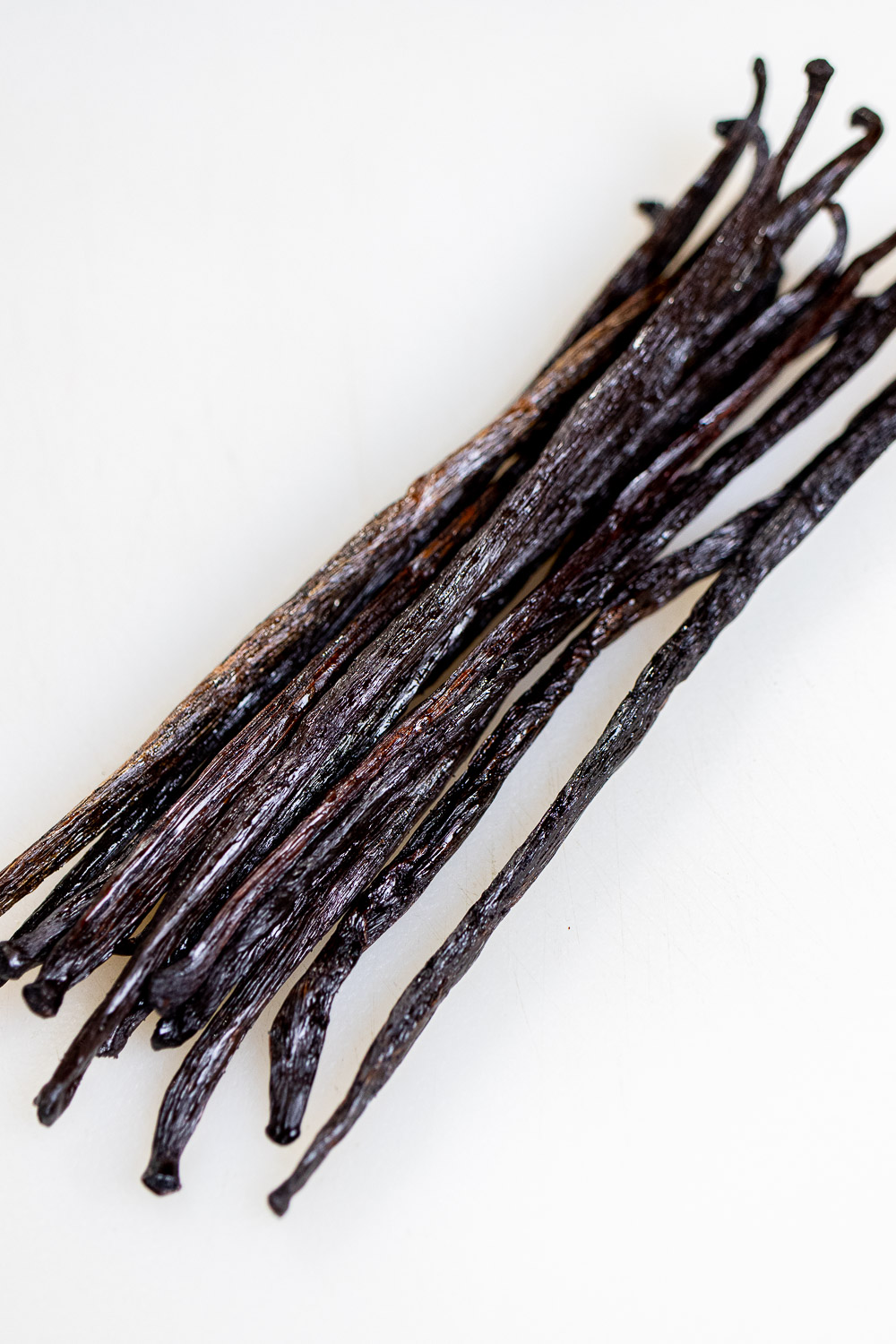
The Differences in Vanilla Extract
Earlier I mentioned that there’s a lot of options for vanilla beans out there. There are three key things to consider when purchasing vanilla beans: making single-fold vs double-fold extract, where the beans are from, and their grade.
Single-Fold Vs Double-Fold Vanilla Extract
Not specifically a type of bean, but the strength of the extract you’re making. Most commercially available vanilla extracts are a single-fold extract. Some professional bakeries will use a double-fold extract because it is sweeter and packs a huge punch of vanilla flavor. It’s also much more expensive to make.
According to the FDA, a single-fold vanilla extract must contain a minimum of 13.35 ounces of vanilla beans per gallon of 35% alcohol (also the required minimum for alcohol percentage). In order to be a commercial double-fold extract, it must contain a minimum of 23 ounces of vanilla beans in every gallon of 35% alcohol. Basically, double-fold extract is almost double the amount of vanilla bean in the same amount of liquid, which is why it’s so much sweeter and more potent than the regular stuff.
What this means for the home cook is that you should basically use 0.8 ounces of vanilla beans for each 8-ounce cup of alcohol when making extract (or 23g of vanilla bean for every 227g of alcohol).
Species and Origins of Vanilla Beans
I’ll try and keep this part brief, but there’s 3 major species of vanilla to know about. The original vanilla plant came from Central America and Mexico and is called vanilla planifolia and is grown in areas like Mexico, Madagascar, Réunion, Comoros, and other tropical areas around the Indian Ocean. It’s the number one species of vanilla in the world. The other major species are vanilla tahitensis, also known as Tahitian vanilla and grown in the South Pacific, and vanilla pompona, which is mostly grown in the West Indies, Central and South America.
Vanilla Planifolia
This species makes up most of the commonly known vanilla beans, including Madagascar, Mexican, Ugandan, Indonesian, and part of Papua New Guinea’s harvest.
Vanilla Tahitensis
Also known as Tahitian vanilla, this species is mostly grown in Indonesia and Papua New Guinea. Wider and flatter than planifolia, these vanilla beans are more often used in perfumes and oils, but still make a good extract.
Vanilla Pompona
Not as common, and tend to be expensive, this species has a strong vanilla flavor and mostly known for its West Indian vanilla and a cultivar from Peru.
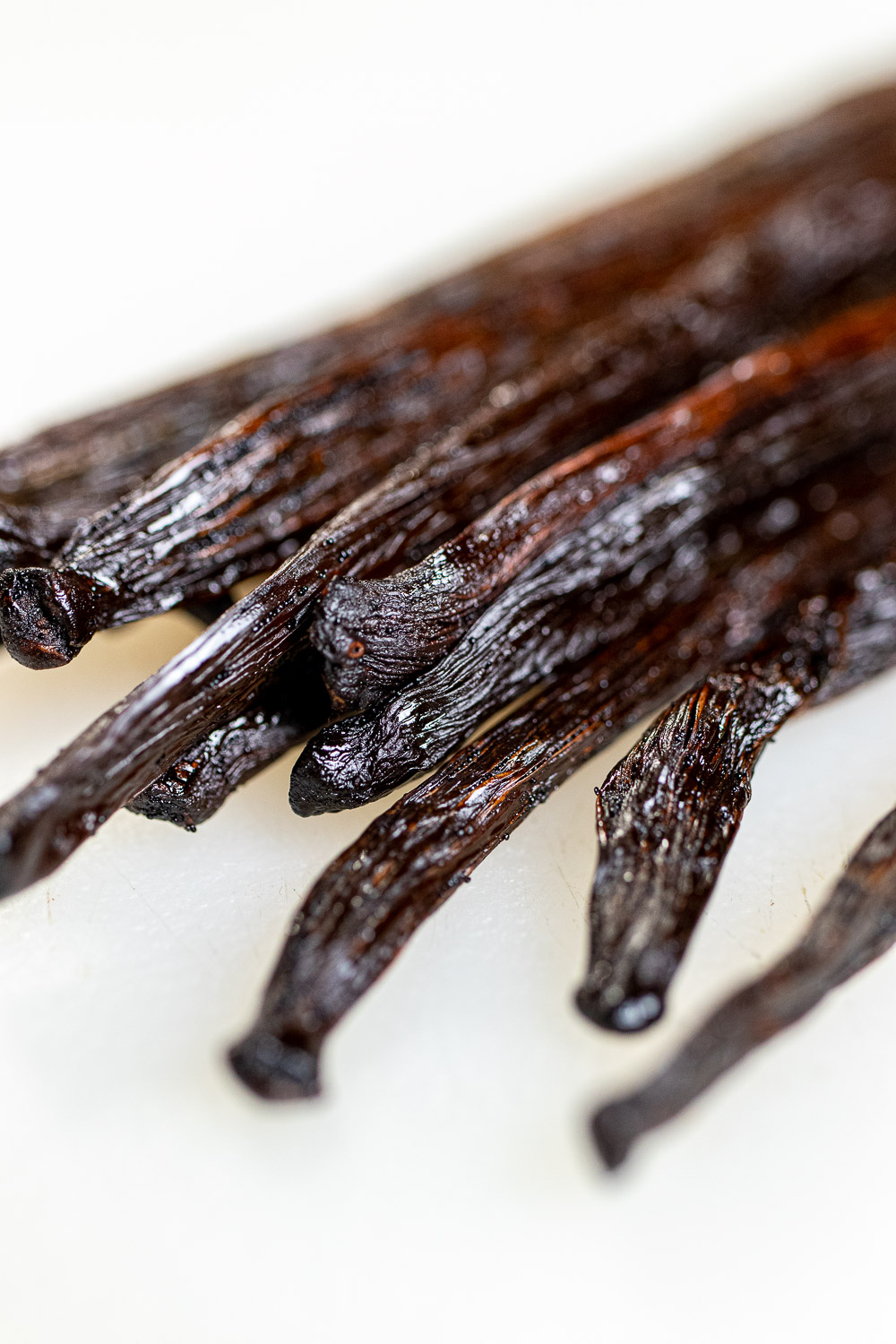
Most Common Cultivars
While there’s a ton of different vanilla beans out there, these are the most common three that people use for making extract and are readily available for purchase online.
Madagascar Vanilla Beans – Also known as Bourbon Vanilla, this is the single most common vanilla bean in the world, and what most people associate with the taste and smell of fresh vanilla. It has a rich and creamy taste.
Mexican Vanilla Beans – The same planifolia species as Madagascar, but these beans are pollinated and cured differently which gives them a distinct flavor and smell. An aroma that’s woody yet spicy, and flavor undertones of cinnamon, clove, nutmeg, and chocolate sets it apart.
Tahitian Vanilla Beans – These have a slightly floral flavor and aroma with undertones of cherry, caramel, and licorice. They also contain the least amount of vanillin.
Grades of Vanilla Beans
The main grades for vanilla beans are Grade A and Grade B, and mostly come down to appearance and moisture.
Grade A Beans – Known as prime or gourmet, Grade A vanilla beans are free from blemishes and have a moisture content of 25-35%. They give up their flavor more easily and they’re best for recipes that call for vanilla beans to be scraped directly into a batter.
Grade B Beans – Known as extract grade, Grade B vanilla beans tend to be drier and sometimes have a cracked appearance. Their moisture content ranges from 15-25% and while their flavor is more concentrated, they don’t give up their flavor as easily as Grade A beans. This is what actually makes them ideal for vanilla extract, because they have more time to steep in the alcohol and slowly give up their concentrated flavor.
The grades don’t signify a quality difference, mostly just a difference in moisture and usage preference. Grade B tends to be cheaper though, which works out well for making vanilla extract. You can use either grade however, so if you see a big sale on a Grade A bean you’d like to try, go for it.
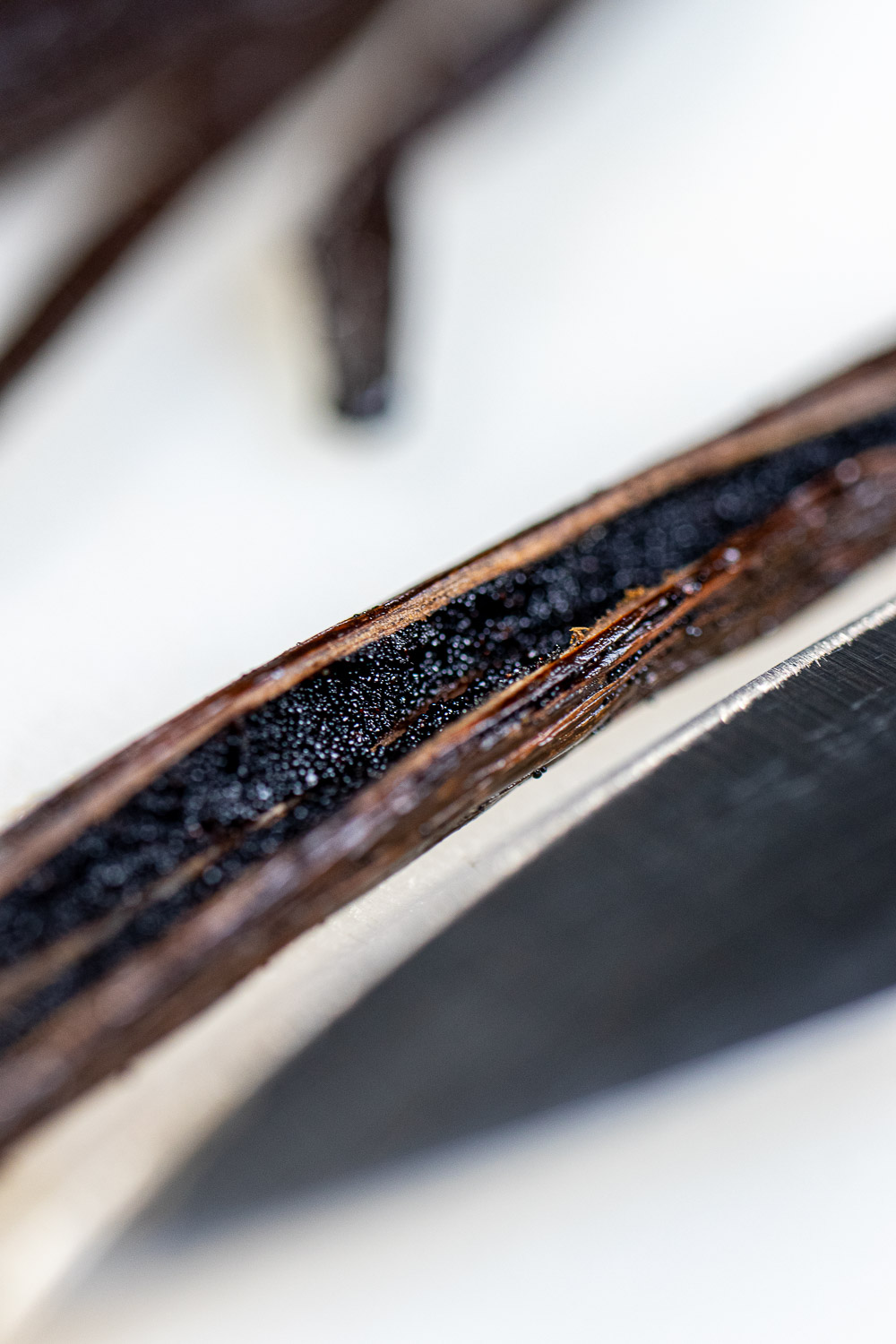
Which Alcohol to Use for Vanilla Extract
The quickest and simplest answer is this: almost all the flavor comes from the vanilla bean you use, so just buy the cheapest bottle of vodka you can find, and it will taste fine and work perfectly well.
Also, according to the FDA, commercial vanilla extract must be made from a minimum of 35% alcohol. All your base liquors (vodka, rum, whiskey, etc.) are usually 80 proof (40%) or higher, so that shouldn’t be an issue.
However… let’s talk about actual choices and other options for a moment.
Liquor Options for Vanilla Extract
Any liquor that’s 80-proof should work well, though I’d highly recommend sticking with vodka, rum, bourbon, or brandy. I would stay away from tequilas and gins, as the agave and juniper berries, respectively, would give the extract an odd flavor.
Vodka – This is the most used option because of its neutral flavor, color, and odor. It will make the purest tasting extract and you can use any cheap brand you wish. The only comment about going super cheap I’ll make, is that you may notice a difference on longer aging extract.
For an average aged extract of 6 months to a year, cheap vodka works fine. Some people have claimed that for extracts aged 12-18 months or longer though, cheap vodka doesn’t hold up as well as a more premium option.
Another thing to keep in mind is to avoid flavored vodkas. Their alcohol content tends to be lower and can make an odd tasting extract. There are a few exceptions, like maybe a birthday cake or chocolate vodka that can make a really good tasting vanilla extract, but their uses would be very situational.
Bourbon – This is the 2nd most popular option for extract. Bourbon is a better choice than a random whiskey, because of its tighter mandates on how it is made, such as the requirement that it is made with at least 51% corn mash. Bourbon will give your extract a deeper and richer flavor, with hints of sweetness and smokiness you won’t get from vodka.
Unlike vodka, however, spend a little more for a good bourbon. Results with cheap, bottom shelf bourbons tend to be bland and poor tasting extract.
Rum – Rum is also a great choice behind vodka because of its clean taste. Because it is made from sugarcane, extract made with rum tends to be a little sweeter as well. Use a white rum for best results. Gold rum tends to taste close to the bourbon results, and dark rum tends to overshadow the vanilla flavor of the beans.
Two other types of rum to consider are spiced rum and coconut rum. Using a spiced rum can give the extract a great flavor that can accentuate the flavors of fall and Christmas baking, specifically anything that uses a lot of cinnamon, nutmeg, ginger, and clove. This does limit the extract into a specific scenario use only though, so keep that in mind. Coconut rum extract also has an amazing flavor but is probably even more specific in its usage.
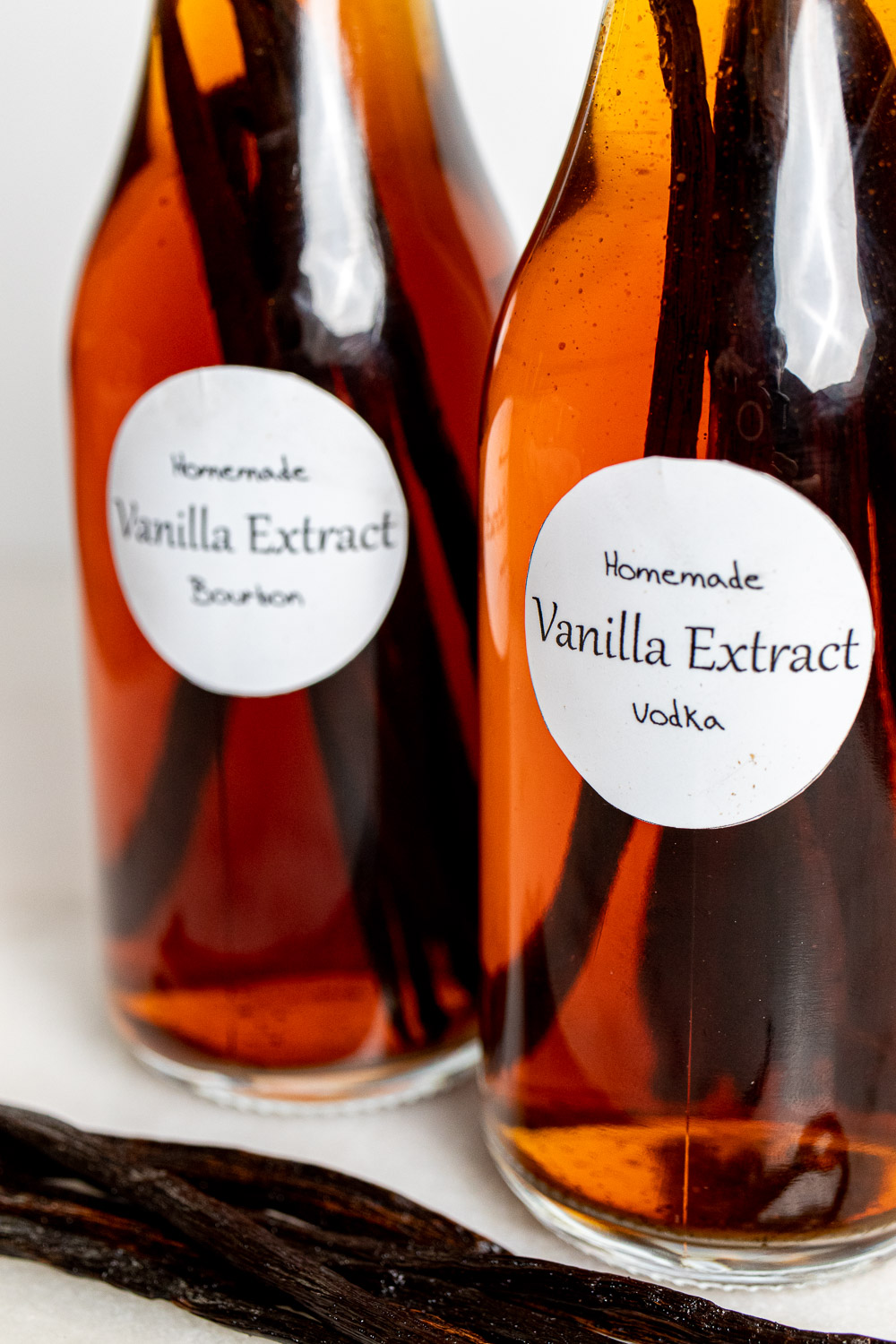
Non-alcoholic – Can you make extract without alcohol? Yes, but I’d suggest this only if you have a reason to avoid using alcohol and not as the first choice. Look in stores or online for vegetable glycerin, or specifically glycerin labeled as “food-grade”. Use 3 parts glycerin to 1 part water to make your extract, so if you were doing 8 ounces (1 cup) of alcohol, do 6 ounces of glycerin and 2 ounces of water.
Keep in mind that using this will tend to take longer to extract the vanilla from the beans, and the result will be thicker, almost like a syrup, than normal vanilla extract. The taste and how it’s used shouldn’t be affected, just know that it will look and pour differently from an alcohol-based extract.
What You Need to Make Homemade Vanilla Extract
This will tie everything together that we’ve discussed. Now that you know it’s less expensive to make your own, the difference between vanilla bean options, and what kind of alcohol to consider, what do you need to make vanilla extract?
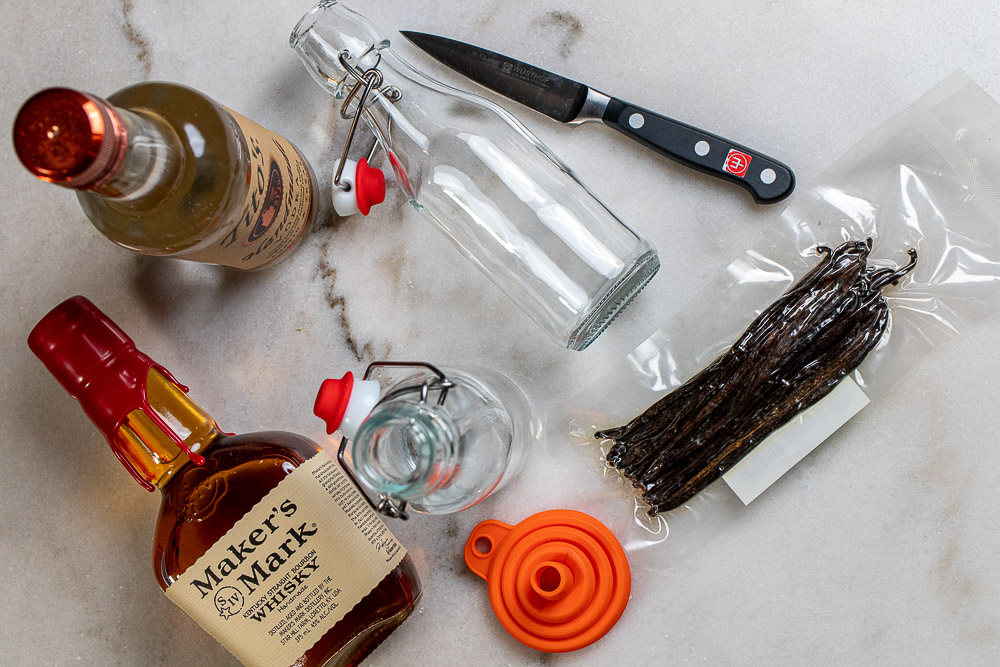
Vanilla Beans – Grade B Madagascar vanilla beans are a great choice, but feel free to experiment with any of the vanilla beans discussed above. For the best flavor, use about 5-6 vanilla beans for each cup of alcohol, or 0.8-oz of beans/8-oz of alcohol.
Alcohol – 80 proof or higher cheap vodka for a baseline. There’s a lot of other options as well, so consider experimenting or searching online for opinions.
Glass Bottles/Jars – The best option for a container is a dark or smoked glass jar that you sterilize, but you can use clear bottles and skip sanitizing them as well for this application. Dark containers help preserve the flavor, but you’re not storing these on a shelf in a well-lit grocery store either. Just be sure to keep your container in a closed cabinet if you use a clear bottle.
The type of container also depends on how much extract you plan on making. You can start extracting in the bottle you plan on storing the extract in, or you could use a large quart or gallon canning jar and transfer into smaller containers later. Technically, you could even drop vanilla beans directly into the bottle of alcohol you use. There’s a lot of options online for glass 2-, 4-, 8-, or 12-ounce bottles, and if you like the ones pictured here, they are glass 8oz flip-top bottles.
Funnel – Get a small funnel to make pouring into your container 100x easier. Look into buying the containers you wish to use first though, as many of the online options tend to throw a funnel in with purchase.
Knife – Some people use scissors, but I find a good, sharp knife is the easiest tool for splitting your vanilla beans open. A decent paring knife works perfect.
How to Make Homemade Vanilla Extract
The process is simple, but it’s not an overnight recipe.
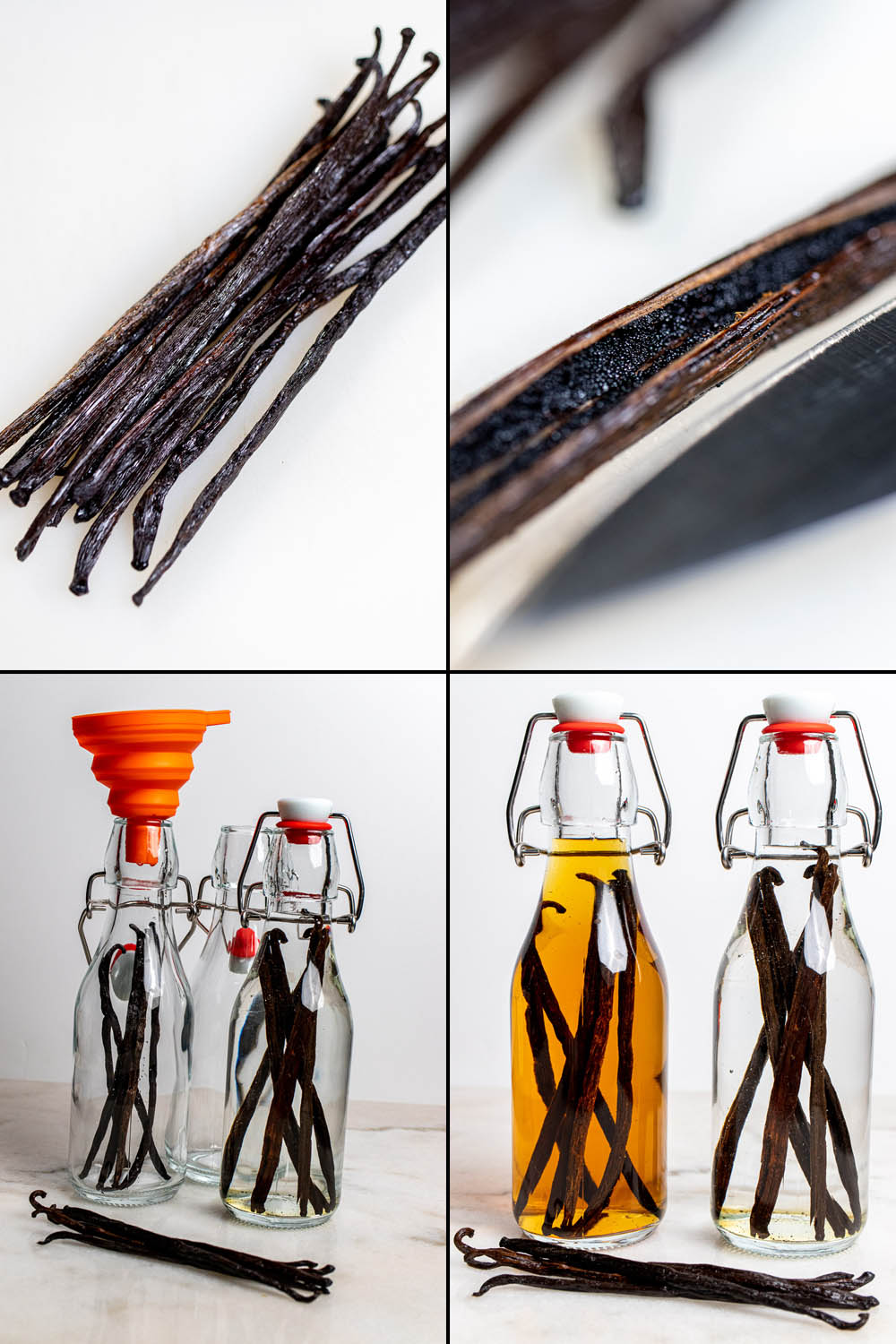
Place your vanilla beans on a cutting board, and with your knife, slice them open lengthwise. Some people cut them in half or just open a slit, I like to hold one end and split them open. The result looks like an old clothespin, where it’s cut down the middle but still attached at the top.
Place the sliced vanilla beans into your glass container and pour your alcohol over them. Whatever container you use, be sure the alcohol fully covers the beans, trimming their length if necessary. Exposed parts of the vanilla beans can become slimy during the extraction process, so be sure not to leave them above the alcohol.
Now, simply wait. Store your extract at room temperature in a dark area, like a closed cabinet. Give it a shake occasionally, even if just once a week. You’ll want to let the extract age at least 8 weeks, ideally 6 months. The longer time it’s given to extract, the stronger and better its flavor will be. 6 months is great, 12 months is even better.
How to Reuse or Repurpose Vanilla Beans
Once you’ve fully aged your vanilla extract, you can remove the beans and toss them out if you wish. One of the best parts of making your own homemade extract though, is that you can actually keep using, reuse, or repurpose the vanilla beans.
Keep Using – After you begin using your vanilla extract, you can simply refill the container with some more of the same alcohol. If you don’t go through a lot of vanilla, you can do this almost indefinitely. If you tend to go through a decent amount of extract though, especially during fall baking, you’ll slowly dilute the strength of your extract, so keep that in mind.
Reuse – Once your extract has aged long enough, you can remove the vanilla beans and make a new batch of extract with your old beans. You can probably get away with using the same beans 2-3 times, but the extract will be slightly weaker with each application. A better option would be to mix the old beans with new ones.
Repurpose – Once you’ve removed your vanilla beans, you can get other uses out of them before tossing them out. Make vanilla salt or sugar: rinse the vanilla bean and dry it off, then let it sit out a few days to dry completely. Add it to bag or container with salt or sugar and let it steep together for about 2 weeks, tossing occasionally.
Other options include sticking it in a jar of maple syrup, a bottle of cream, or even a bag of cookies. For faster infusions consider adding it to the recipe when making caramel or dulce de leche or let it steep in a panna cotta or other desserts.
📋 Recipe
How to Make Homemade Vanilla Extract
Ingredients
- 5-6 Madagascar Grade B vanilla beans
- 8 ounces 80 proof vodka
- 8- ounce glass bottle
- Funnel
- Knife
Directions
- Place your vanilla beans on a cutting board, and with your knife, slice them open lengthwise. Some people cut them in half or just open a slit, I like to hold one end and split them open. The result looks like an old clothespin, where it’s cut down the middle but still attached at the top.
- Place the sliced vanilla beans into your glass container and pour your alcohol over them. Whatever container you use, be sure the alcohol fully covers the beans, trimming their length if necessary. Exposed parts of the vanilla beans can become slimy during the extraction process, so be sure not leave them above the alcohol.
- Now, simply wait. Store your extract at room temperature in a dark area, like a closed cabinet. Give it a shake occasionally, even if just once a week. You’ll want to let the extract age at least 8 weeks, ideally 6 months. The longer time it’s given to extract, the stronger and better its flavor will be. 6 months is great, 12 months is even better.
Equipment Used
Notes
Your Notes
Nutrition
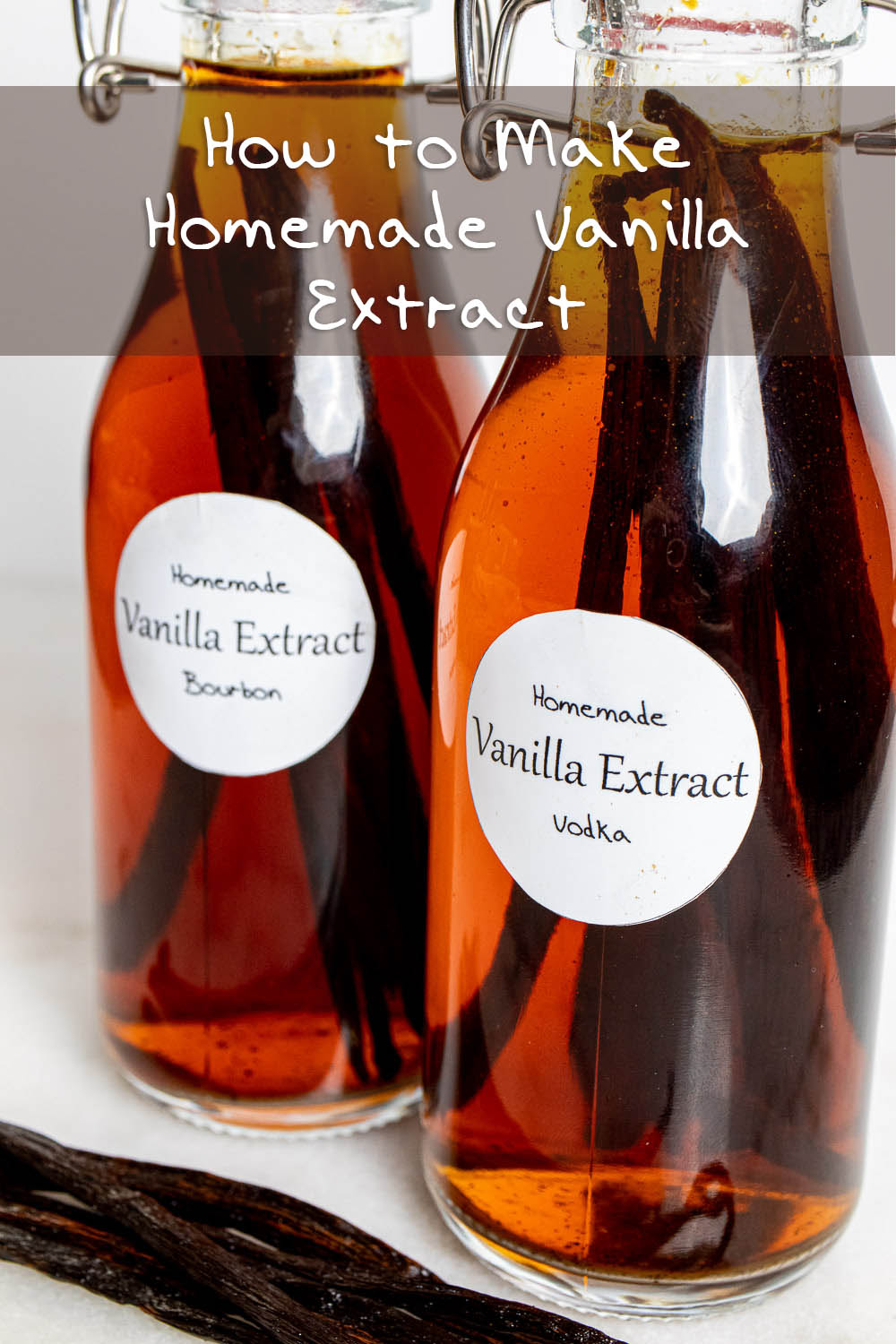


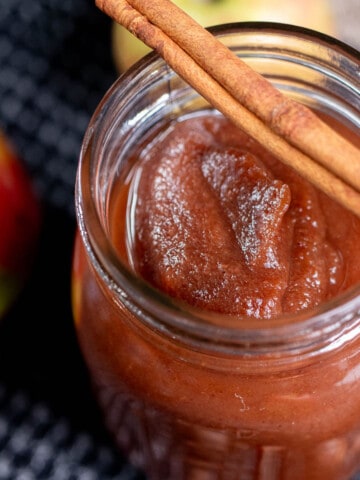
Comments
No Comments